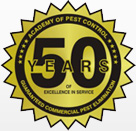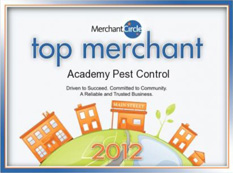

Residential * Commercial
Licensed, Bonded and Insured
Why Choose Us:
Choosing the Right Pest Control Company is as Simple as APC!
* Superior Service
* An Unbeatable Warranty Plan
* State of the Art Treatments
* Commercial Specialist
* Competitive Pricing
* 100% Satisfaction Guaranteed

The Buzz on Bees
Bee Prepared!
To make your environment safer and reduce your risk of a sting.

- Teach children to use caution and respect all bees.
- Teach children to notify a teacher or adult it they find a nest or swarm.
- Eliminate all potential nesting sites.
- Check the walls and eaves of all structures.
- Close off wall, chimney and plumbing-related gaps that are more than 1/8 inch large.
- Cover rain spouts, vents, etc. with 1/8" hardware cloth.
- Watch for regular entrance and exit routes used by swarms during spring, summer and fall.
Treating Stings
If stung by a bee or bees:
- Find a safe area as soon as possible.
- Remove the stinger quickly; scrape it out with a fingernail or credit card; do not release more venom by squeezing the stinger.
- Wash the affected area with soap and water. Apply an ice pack to relieve pain.
- See a doctor if breathing is difficult, if you are stung several times, or if you are allergic to bee stings.
Extracted and adapted from "Bee Alert: Africanized Honeybee Facts," published by the Cooperative Extension, University of California Division of Agriculture and Natural Resources.
Colony Collapse Disorder (CCD)
Colony Collapse Disorder, as it has been named, threatens not only pollination and honey production but, much more, this crisis threatens to wipe out production of crops dependent on bees for pollination. Pollination is responsible for $15 billion in added crop value, particularly for specialty crops such as almonds and other nuts, berries, fruits, and vegetables. In California, the almond crop alone requires 1.3 million colonies of bees, approximately one half of all honey bees in the United States, and this need is projected to grow to 1.5 million colonies by 2010. The bee industry is currently facing difficulty meeting pollination demand in almonds. If research cannot solve CCD, beekeepers will be unable to meet demand for this and other crops.
Bee Fun Facts
- Bees are credited with over one-third of the food we eat in relation to their pollination of crops.
- A single colony may contain 80,000 bees all from the same queen.
- The average flight speed of a bee is 12.5 MPH.
- Two Million flowers is the amount a bee must tap to make one pound of honey.
- A bee hive will fly 55,000 miles to bring one pound of honey.
- One ounce of honey will fuel a bee's flight around the world.
- Utah is known as the Beehive State.
- The highest honey production states are: South Dakota, North Dakota, Florida and California.
